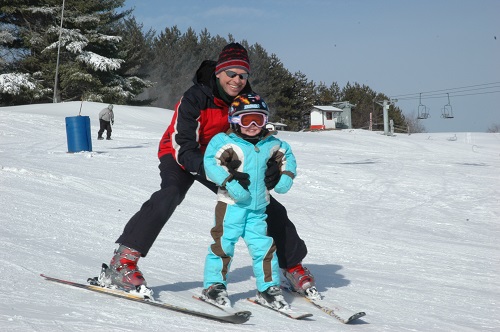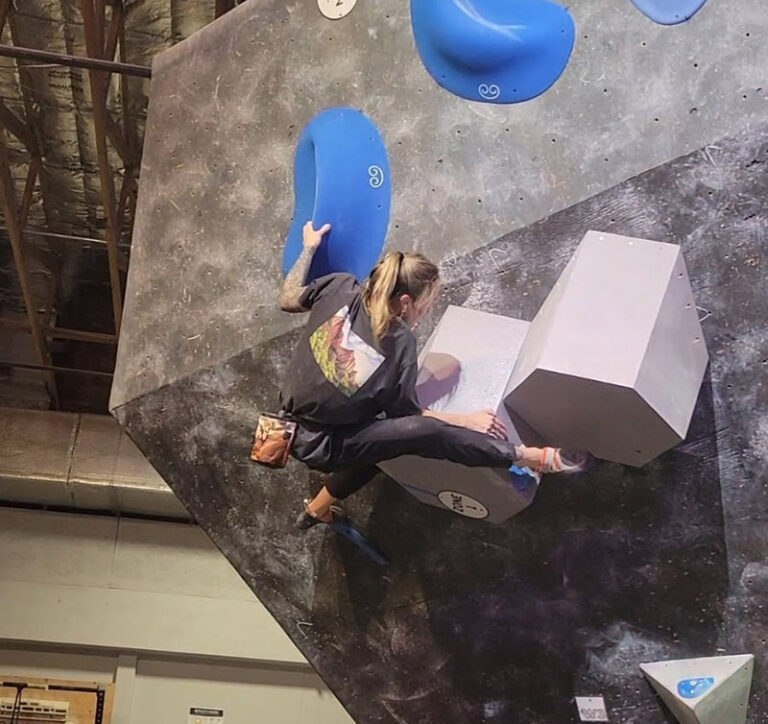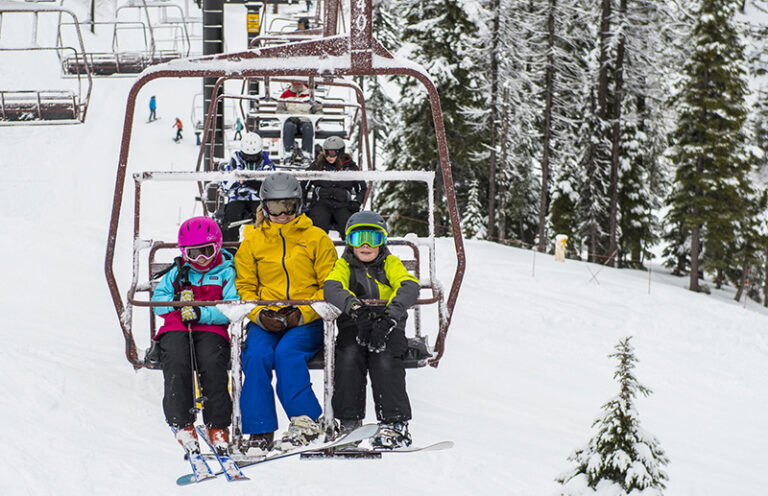Skiing together allows my family to achieve one of our common goals: to embrace outdoor adventures year round. We appreciate living in a four-season climate, and being skiers helps us to joyfully welcome winter cold and snow. My husband would say we’re teaching our children to ski because we want them to love what we love – so we can enjoy the outdoors together for years to come.
Like camping or biking, skiing is a lifelong and generational pastime. In these early years, as we work together to teach our preschoolers to ski, the synergy bonds us, and our ski memories sustain us. Being a “ski family” also teaches us how to love each other better – practicing patience, kindness, sacrifice.
Of course, when I ask my kids what they like best about skiing, they say it’s the chairlift rides. But I’ve seen their smiles after a good run; they feel proud of their hard work and best efforts.
During our eldest child’s first ski season, we kept our expectations simple. He was not yet three years old – the only skier with a pacifier. Each time we were on the mountain, our goals were for him to have fun and try his best. To ensure that, he was asked after each run and before getting on the chairlift again: “Are you warm enough? Are you still having fun?”
To increase his motivation, we shamelessly offered fruit snacks on the chairlift, after each run, and even during descents. Après-ski hot chocolate was also a routine reward. Yet, my husband and I didn’t underestimate what our son could accomplish. Rather than say “let’s just see what he can do,” we expressed clear, progressive goals for each new attempt – from working on speed control and stopping to making S-turns where we descended the bunny hill like a train: “Follow Daddy and all his turns.”
Last season, while teaching two kids, if we completed three to five runs together before lunchtime, we considered that a success – and if we had a few more runs after lunch, it was a great day. Here are some key lessons my family has learned so far.

1. Get a child on skis as early as possible pre-season – if there is snow on the ground where you live, suit up and go outside. If you plan to use a ski training system, such as the CoPilot™, now’s the time to start using it. Find a short slope and do some test “runs” to simply help her get the feel of it – balancing with bent knees and weight forward while moving. Children have a lower center of gravity, so the shorter they are, the less they struggle to learn ski balance. Once on the hill, they learn progressively how to slow down, stop and turn.
2. Increase excitement and anticipation by monitoring weather and snow forecasts, viewing ski mountain webcams, and watching ski videos together.
3. Exemplify how much fun it is to ski – from the beautiful views to the camaraderie with other mountain lovers. Express gratitude for nature and strong, healthy bodies to enjoy the sport.
4. Warm kids are happy kids. Invest in good clothing and gear, especially ski helmets and goggles. (Tip: put mittens on before the jacket so the wrist cuffs remain snug.)
5. Not every outing is blissful. A cranky child who’s done after only a few runs, or worse – who suits up but only wants to play in the snow – is inevitable. Laugh about it, and try again another day.
6. It’s never too late to teach a child to ski. I’m proof of that. I didn’t grow up in a skiing family, but my sister’s husband did; he taught me some basic skills when I was a teenager. This inspired me to join my school’s ski club and take lessons. I never imagined that I would someday be a season pass holder.
Admittedly, it is time-consuming and challenging to teach children how to ski. I don’t get to my favorite runs as often as I would like, and I’m on a first-name basis with the bunny hill chairlift operators.
But it’s worth it. My kids have fun while learning about hard work, perseverance and responsibility. And someday, we’ll all swoosh down blue square and black diamond runs together – my kids proud to be skiing faster and better than me. //













